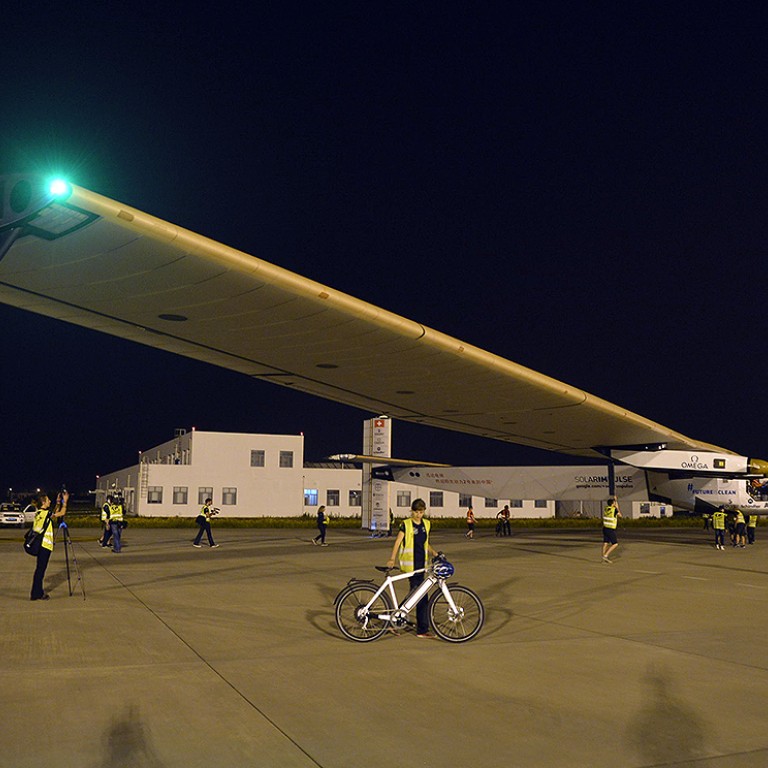
Update | Bad weather forces Solar Impulse to land in Japan during trans-Pacific crossing attempt
Bad weather has thwarted the trans-Pacific crossing of Solar Impulse, the Swiss experimental plane which took off from Nanjing on Sunday for Haiwaii on a six-day non-stop flight powered only by the sun.
Bad weather has thwarted the trans-Pacific crossing of Solar Impulse, the Swiss experimental plane which took off from Nanjing on Sunday for Haiwaii on a six-day non-stop flight powered only by the sun.
Just a little over 36 hours into its journey, the plane was forced to make an unscheduled landing in Nagoya, Japan because of deteriorating weather, the team said on its website on Monday afternoon. It was expected to touch down in Nagoya at around 11pm local time and wait for better conditions before resuming its mission.
“On my way to Nagoya, disappointed for not continuing but very thankful to the Japanese authorities for their support,” tweeted pilot Andre Borschberg at 3.23pm (Hong Kong time) from the cockpit.
The Swiss businessman heading the project left Nanjing at 2.39am on Sunday in the single-seater monoplane for the longest and most challenging leg of its round-the-world journey after spending two months in China, unable to find a weather window.
Aeronaut and psychiatrist Bertrand Piccard, initiator of the project, said on Twitter: “This diversion is between elation and disappointment: #Si2 is doing extremely well, but the weather is deteriorating. Everything we could do has been done. The weather we cannot control. This is what exploration is about.”
As the super-light aircraft is susceptible to problems caused by wind and rain before it soars to a cruising altitude of up to 8,000 metres, it requires good weather conditions for take-off as well as sunshine for recharging its solar batteries.
Borschberg had said in previous interviews with the South China Morning Post that in order for him to survive in the 3.8 cubic-metre cockpit alone, piloting the plane for almost a week, he would have to avoid crosswinds and turbulence. That would lengthen the flying time, and he should ideally cross cloudy areas at night while meeting the sun in the morning. Adding to the suspense is the unpredictability of landing conditions in Hawaii, which is too far away to get an accurate forecast so early.
Solar Impulse is on a mission to promote clean energy by attempting its unprecedented round-the-world flight using no fuel. The Nanjing to Hawaii leg is the seventh and most difficult part of the historic voyage. Piccard and Borschberg completed a tour across the US in 2013 using an earlier version of the plane.

